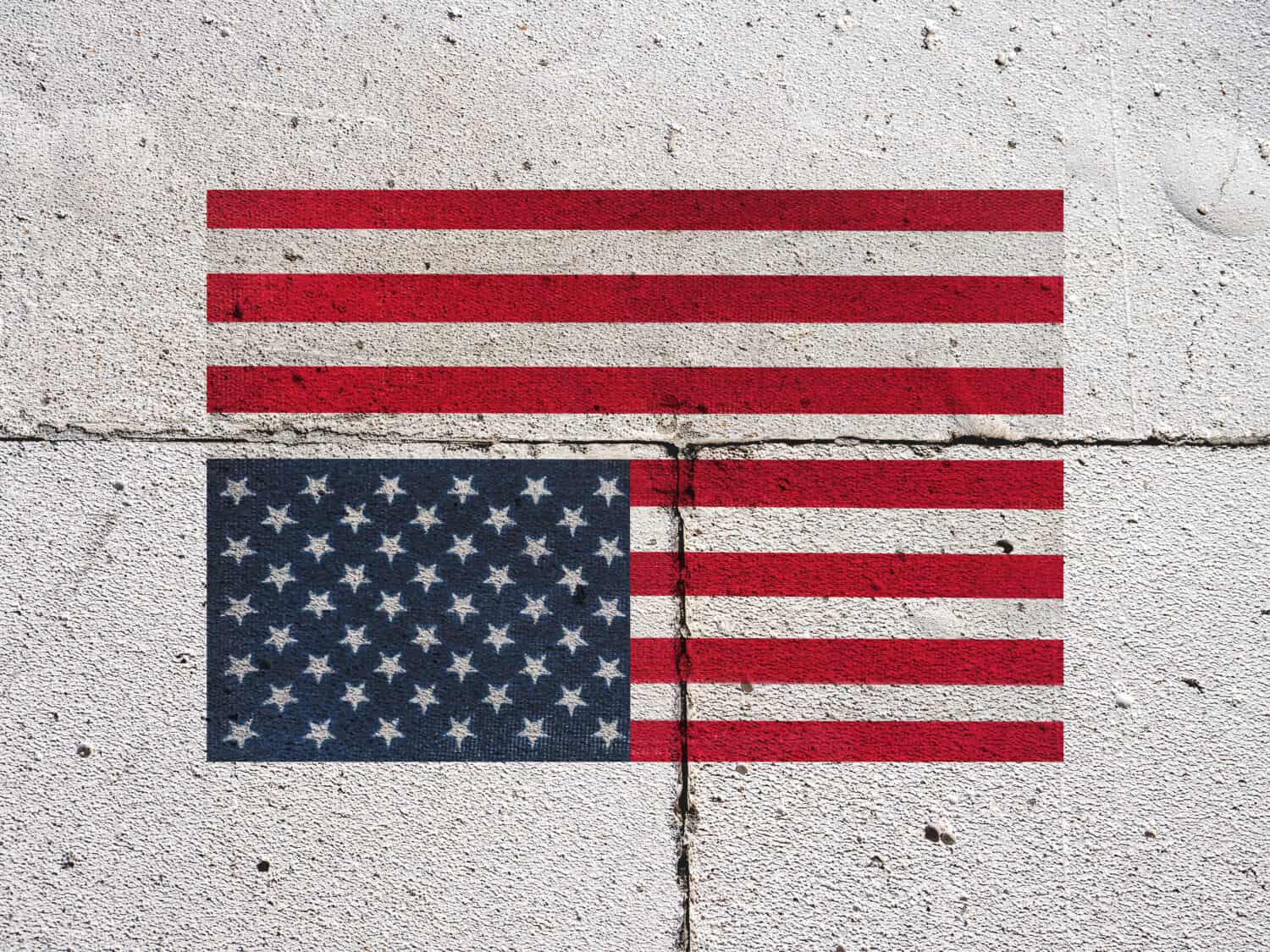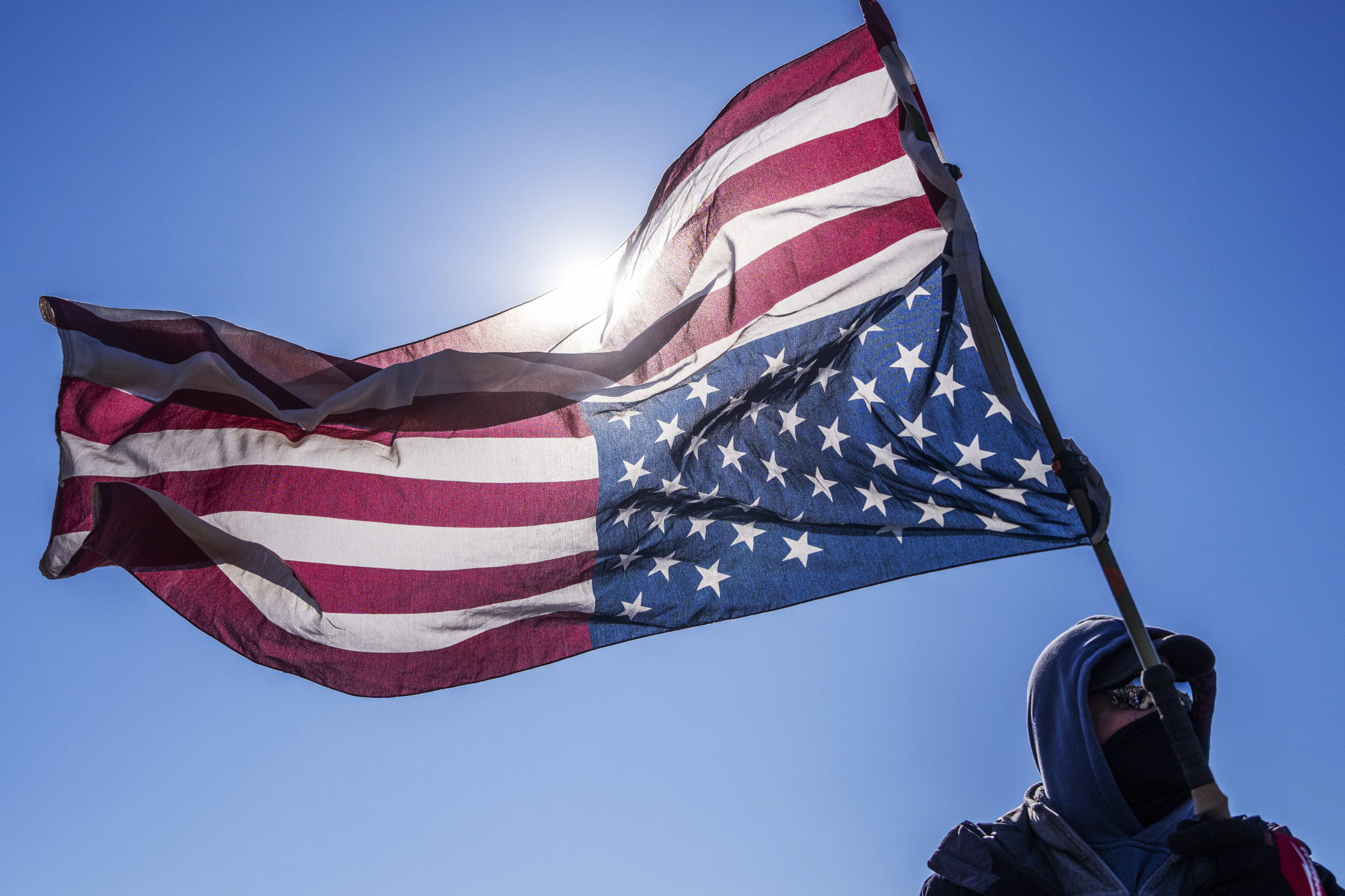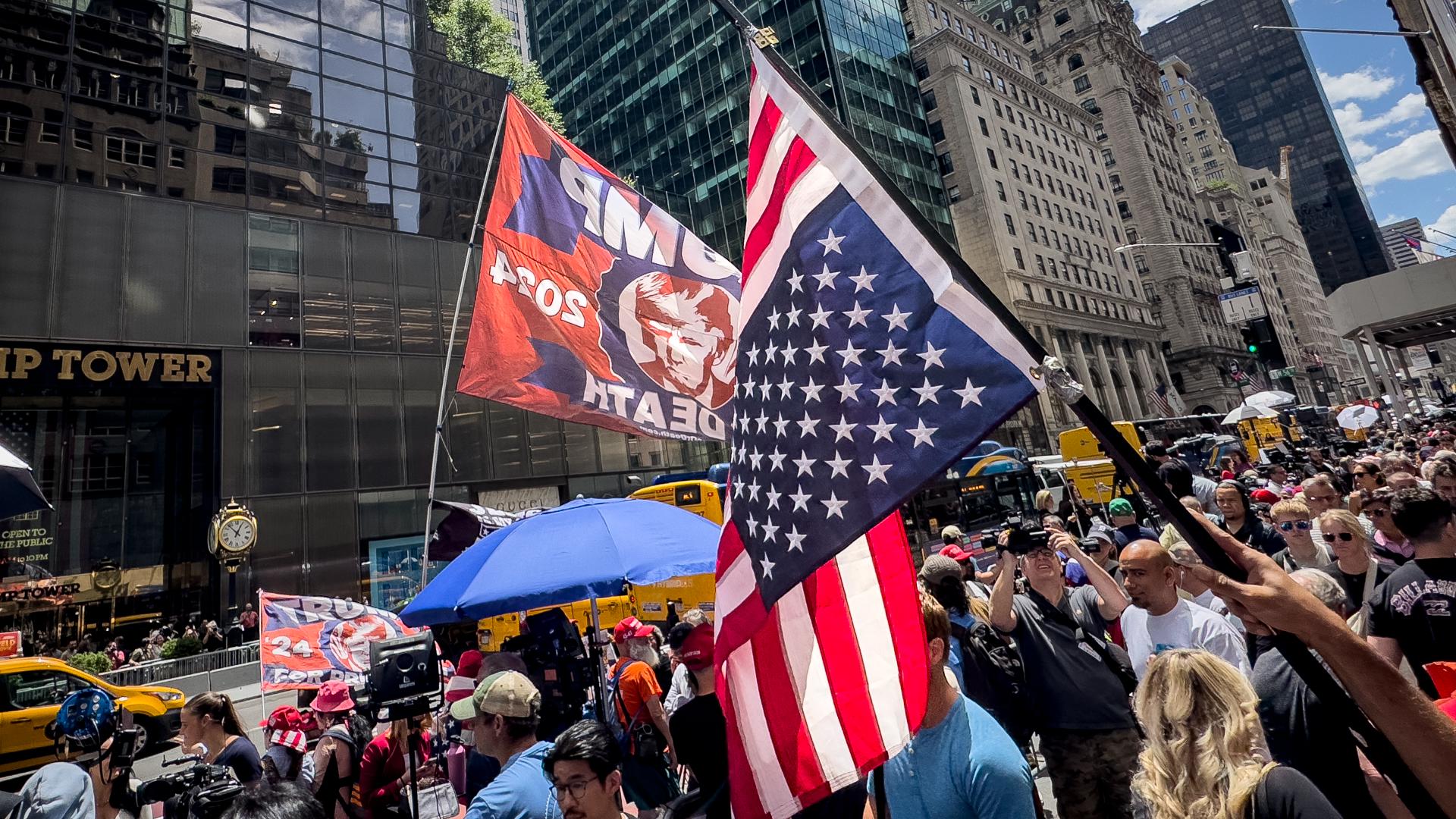Unveiling The Upside Down American Flag Symbolism
Table of Contents
- The American Flag: A Revered National Emblem
- Historical Roots: The Upside Down Flag as a Distress Signal
- From Distress to Dissent: The Flag as a Symbol of Protest
- Legal Precedent: First Amendment Protection
- Contemporary Interpretations: Modern Protests and Misconceptions
- The Flag Code and Its Nuances: When is it Appropriate?
- The Enduring Power of a Symbol: Why it Matters
- Understanding the Upside Down Flag: A Call for Dialogue
The American Flag: A Revered National Emblem
The American flag is a highly revered symbol, embodying the very essence of the United States. Its 13 stripes represent the original colonies, and its 50 stars signify the current states of the Union. Every fold, every color, and every star is imbued with meaning, reflecting the nation's history, its struggles, and its triumphs. For many, displaying the flag correctly, with its union (the blue field with stars) at the top left, is a profound expression of respect and patriotism. It signifies allegiance, honor for those who served, and a deep connection to the principles upon which the nation was founded. Choosing to fly the flag upside down for no apparent reason is widely considered disrespectful by a significant portion of the population, often leading to confusion or offense. This perception underscores the powerful emotional and cultural weight the flag carries. The reverence for the flag is deeply ingrained in American culture, making any deviation from its traditional display a subject of intense scrutiny and interpretation.Historical Roots: The Upside Down Flag as a Distress Signal
The upside down flag's symbolism isn't new; it traces its origins to the sea, where sailors flew them as a signal of distress to other maritime travelers. This practice was not a sign of disrespect but a desperate plea for help, indicating extreme danger to life or property. Imagine a ship caught in a violent storm, listing dangerously, or under attack – flying the flag upside down was a universal, unmistakable signal that immediate assistance was required. This historical context is crucial for understanding the foundational meaning of the upside down American flag. It was a signal of urgency, a visual SOS, intended to cut through language barriers and convey a critical situation. This original purpose highlights that the flag, when inverted, was never meant to insult or demean, but rather to communicate a dire predicament. The criterion of extreme danger to life or property is still up to interpretation, however, when applying this historical meaning to contemporary land-based situations.Maritime Tradition: A Cry for Help at Sea
In the perilous world of maritime navigation, clear and unambiguous communication was, and still is, a matter of life and death. When a vessel found itself in dire straits – perhaps sinking, on fire, or facing an imminent threat that jeopardized the lives of its crew and the integrity of the ship – every second counted. The international maritime signal for distress, recognized across all nationalities, included flying a nation's flag upside down. This wasn't a casual gesture; it was a grave declaration that the ship and its occupants were in a state of extreme peril and required immediate assistance. This tradition underscores the profound and serious nature of the inverted flag. It wasn't about politics or protest; it was about survival. This historical precedent firmly establishes the primary, original meaning of the upside down flag as a signal of profound emergency and an urgent cry for help.From Distress to Dissent: The Flag as a Symbol of Protest
While its origins are rooted in maritime distress, the symbolism of the upside down American flag has evolved significantly on land. For decades, it has been used as a symbol of protest, transforming from a cry for help in physical danger to a powerful statement of distress over the state of the nation or specific societal issues. When the flag is flown upside down, it conveys a powerful message of distress or profound disagreement with current policies, leadership, or perceived threats to the nation's core values. This shift from an emergency signal to a form of dissent reflects a belief that the country itself is in a state of "extreme danger" – not necessarily physical, but existential, political, or moral. This interpretation allows citizens to use a universally recognized symbol to express profound concern, drawing attention to issues they believe are of critical importance.A Legacy of Activism: Civil Rights and Beyond
The use of the upside down flag as a form of protest gained traction during various periods of social and political upheaval in American history. It was seen during the Vietnam War protests, where activists inverted the flag to express their profound distress over the conflict and the perceived moral decay of the nation. Similarly, during the Civil Rights Movement, some protestors adopted this symbol to highlight the "distress" of racial injustice and inequality, arguing that the nation was failing to uphold its foundational promise of liberty and justice for all. Explore its historical context, its use in civil rights movements, and contemporary activism, and uncover the complex meanings it holds today. The symbol has represented various causes and sentiments over the country's history, signaling deep dissatisfaction and a belief that the nation's principles were under threat. This historical usage firmly establishes the flag's role as a potent tool for dissent, allowing citizens to voice their concerns about the direction of the country.Legal Precedent: First Amendment Protection
The act of displaying the American flag, even in an inverted manner, is largely protected under the First Amendment of the U.S. Constitution, which guarantees freedom of speech. A landmark case, *Spence v. Washington* (1974), solidified this protection. In this case, a college student, Harold Spence, hung an American flag upside down with a peace symbol taped to it in protest of the Vietnam War and the Kent State shootings. He was convicted under a Washington state law prohibiting the display of a flag to which "any word, figure, mark, picture, design, drawing or advertisement of any nature" has been attached. The Supreme Court overturned his conviction, ruling that his display was a form of symbolic speech protected by the First Amendment. The court decreed that displaying an upside down flag was a form of protected First Amendment speech, provided there was an intent to convey a particular message and the likelihood that the message would be understood by those who viewed it. This ruling is why contemporary protestors have taken to displaying American flags upside down, recognizing it as a powerful, constitutionally protected means of expressing dissent.Contemporary Interpretations: Modern Protests and Misconceptions
The American flag upside down meaning has sparked curiosity and debate for decades, and its use continues to evolve in contemporary society. In recent years, the symbol has seen a resurgence, particularly in the wake of the January 6 insurrection at the U.S. Capitol and in connection with false claims that the 2020 presidential election was stolen. For those who believe the nation is in a state of extreme peril due to political corruption, perceived threats to democracy, or a fundamental departure from constitutional principles, flying the flag upside down becomes a visual manifestation of their profound distress. It's a way to signal that, in their view, the country is in a state of emergency, mirroring the original maritime distress signal but applied to the body politic.Navigating Misunderstandings: Intent vs. Perception
While some may view it as a gesture of disrespect, particularly those who hold the flag as an inviolable symbol of national unity, it often serves as a powerful means of communication, drawing attention to issues of critical importance. The core of the misunderstanding lies in the difference between intent and perception. For the person displaying the flag, it is often a sincere, albeit dramatic, expression of alarm or protest. They are not necessarily disrespecting the flag itself, but rather using its established symbolism to highlight what they perceive as a national crisis. However, for others, especially veterans and those who associate the flag primarily with sacrifice and patriotism, seeing it inverted can be deeply offensive, interpreted as an insult to the nation and its ideals. This tension highlights the complex cultural interpretations and the need for understanding the context behind such displays. It's a powerful gesture that transcends mere mistakes to express protest, distress, and urgency.The Flag Code and Its Nuances: When is it Appropriate?
The U.S. Flag Code provides guidelines for the display and care of the American flag. While it does not carry legal penalties for non-military citizens, it offers widely accepted conventions for respectful flag display. So, when is it appropriate to fly the flag upside down according to the Flag Code? The code explicitly states: "The flag should never be displayed with the union down, except as a signal of dire distress in instances of extreme danger to life or property." This clause directly links back to the flag's historical maritime use. This means that, technically, the code permits the upside down display only under specific, grave circumstances. However, the phrase "extreme danger to life or property is still up to interpretation." This ambiguity allows for various interpretations, especially when applied to non-physical forms of "danger" such as political or societal distress.Distinguishing Intent: Distress vs. Disrespect
The crucial distinction when evaluating an upside down flag display lies in discerning the intent. If the intent is genuinely to signal a perceived "dire distress" for the nation's future, its democratic institutions, or its core values, then the display aligns with the historical and coded meaning of an emergency signal. This is distinct from intentionally defacing the flag or displaying it upside down simply to provoke or insult without a specific message of distress. Understanding the history and upside down flag meaning helps us appreciate the deep symbolic gestures associated with the American flag. While it can be a distress signal or a form of protest, displaying the flag correctly according to the flag code remains a profound expression of respect and patriotism. The debate often arises when the "danger" is not universally acknowledged or when the method of protest is deemed offensive by those who do not share the same perception of national peril.The Enduring Power of a Symbol: Why it Matters
The enduring power of the upside down American flag symbolism lies in its ability to immediately convey a sense of urgency and profound concern. It's a visual shorthand that bypasses the need for words, instantly signaling that the person displaying it believes something is fundamentally wrong with the nation. This powerful gesture transcends mere mistakes to express protest, distress, and urgency. It forces viewers to confront the possibility that not everyone believes the nation is on the right course, or that its fundamental principles are being upheld. Whether in emergencies or as a form of dissent, understanding the cultural interpretations and historical context behind this symbol is vital. It serves as a stark reminder that even the most revered national symbols can be repurposed to reflect internal struggles and calls for change, sparking necessary conversations about the state of the union.Understanding the Upside Down Flag: A Call for Dialogue
The American flag upside down meaning has sparked curiosity and debate for decades, and it continues to be a potent symbol in contemporary American society. Rather than dismissing it outright as a sign of disrespect, a deeper understanding of its historical context, legal protections, and evolving symbolism can foster more productive dialogue. Explore its historical context, its use in civil rights movements, and contemporary activism, and uncover the complex meanings it holds today. Recognizing that this emblem serves as a powerful distress signal and a rallying cry for social change, rooted in maritime tradition, allows for a more nuanced interpretation. It encourages us to look beyond the immediate visual and consider the underlying message of distress, urgency, or profound concern that the display intends to convey.Conclusion
The upside down American flag symbolism is a rich tapestry woven from maritime tradition, constitutional rights, and the ever-evolving landscape of American protest. From its origins as a desperate cry for help at sea to its contemporary use as a powerful statement of dissent against perceived national distress, its meaning is complex and often debated. While some may view it as a gesture of disrespect, it often serves as a powerful means of communication, drawing attention to issues of critical importance. Understanding the history and upside down flag meaning helps us appreciate the deep symbolic gestures associated with the American flag. It is a symbol that forces us to confront uncomfortable truths, to engage in dialogue, and to consider the diverse perspectives within the nation. We hope this guide has shed light on the multifaceted meanings behind displaying the flag in this specific manner. What are your thoughts on the upside down American flag symbolism? Share your perspective in the comments below, and consider exploring other articles on our site to further your understanding of American history and symbols.
Upside Down American Flag: History, Meaning, and Symbolism - AZ Animals

Upside-Down US Flag Meaning: 'Distress' Signal Seen Flying Across the

What does the upside-down American flag mean? | krem.com